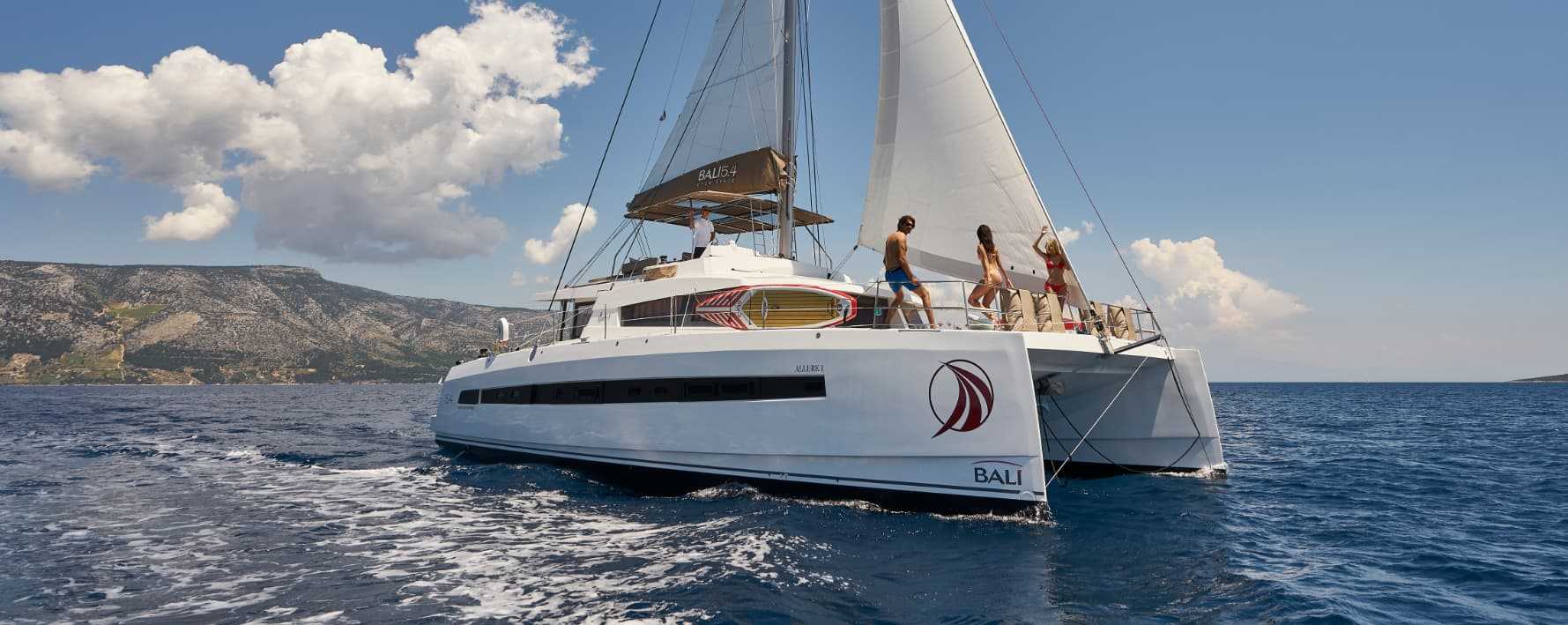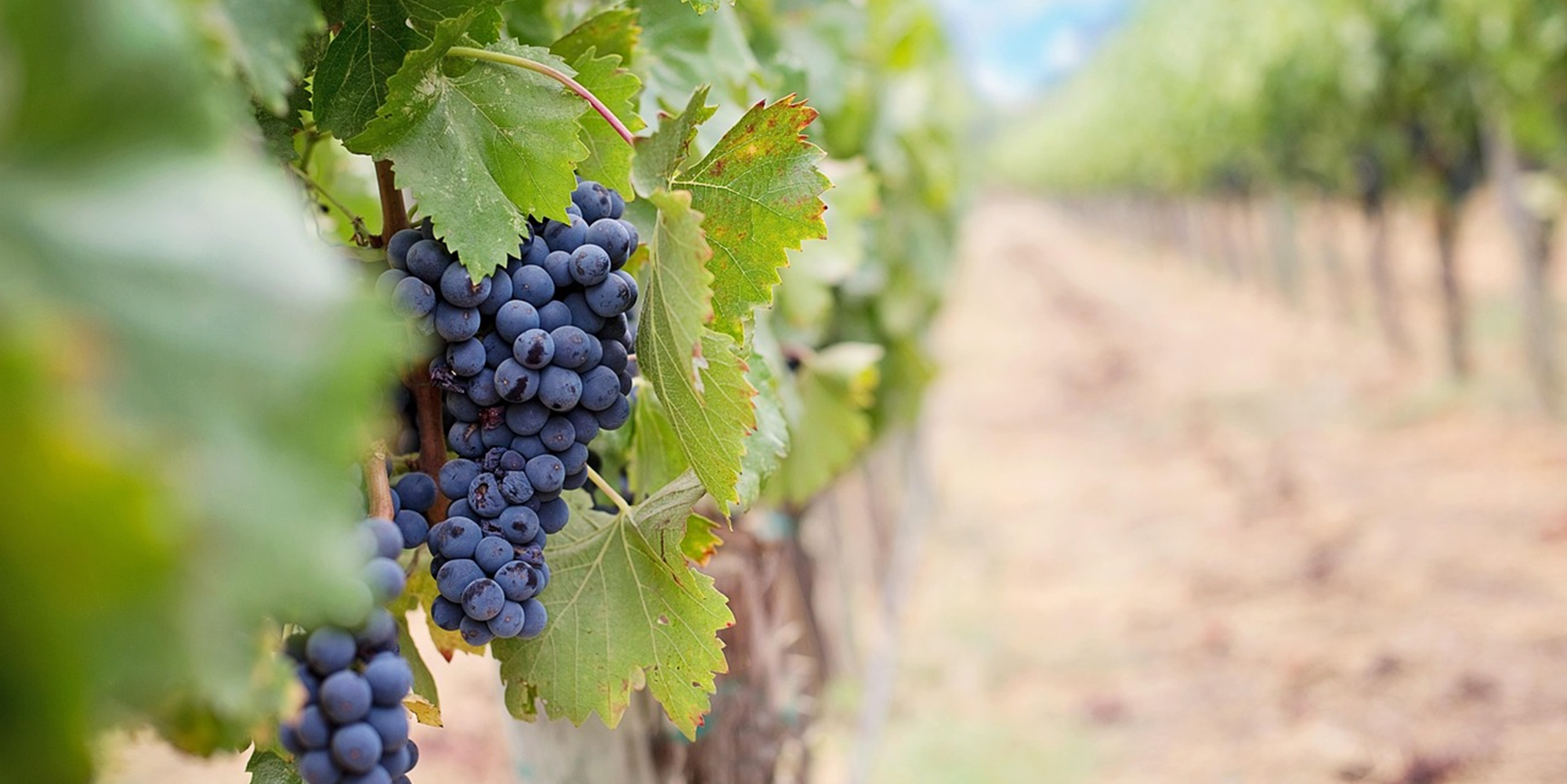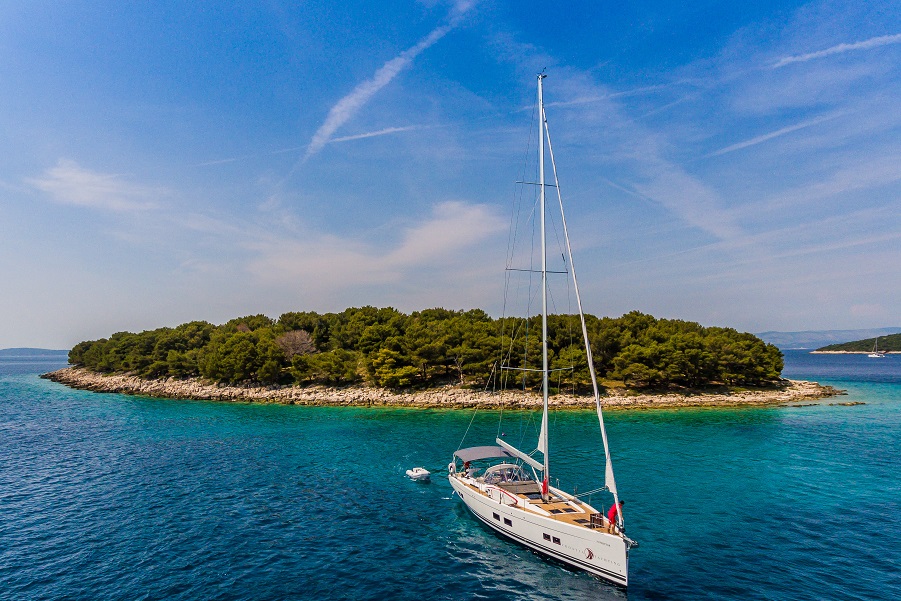Plavac Mali - the wine that sails through the heart of Dalmatia

In the early morning mist, as the sun rises slowly over the rocky slopes of Pelješac, Hvar, and Brač, the true spirit of Dalmatian islands comes alive in every sip of Plavac Mali wine. This iconic Croatian red wine has been cultivated on steep, terraced vineyards for centuries, reflecting the rich history, unique climate, and rugged landscape of Dalmatia. Known for its deep flavors and strong connection to the sea and sun, Plavac Mali is more than just a wine — it is a journey through Dalmatian culture and tradition.
Whether you’re sailing along the Adriatic coast or relaxing in an idyllic cove on Hvar, Pelješac, or Brač, opening a bottle of Plavac Mali invites you to experience the authentic aromas and tastes of ancient vineyards, salty sea breeze, and the warmth of Croatian hospitality. As a true symbol of Croatian wine heritage, Plavac Mali captures the essence of Dalmatia in every glass.
The Rich History of Plavac Mali
The history of Plavac Mali is deeply rooted in the fertile soils of central and southern Dalmatia. Archaeological discoveries and historical records reveal a centuries-old tradition of viticulture in this region, dating back to the era of Greek colonists who introduced advanced grape cultivation techniques to the Adriatic coast. The influential Dubrovnik Republic, a key center of trade and culture, played a crucial role in preserving local winemaking practices and developing native grape varieties, with Plavac Mali holding a prominent place among them.
The earliest written reference to Plavac Mali appears in Franz Ritter’s 1821 work, Viticulture of the Austrian Empire, where it was called “Plavaz mali czerni.” Later, in 1841, Franz Trummer provided a more detailed description of the variety in Classification and Description of Recommended Grape Varieties. Remarkably, the oldest known Plavac Mali vineyard was planted in 1860 in Dol on the island of Hvar, and thanks to the dedication of local growers, these vines still thrive today.
Genetic studies have shown that Plavac Mali is a natural cross between two indigenous Croatian varieties — Crljenak Kaštelanski (also known internationally as Zinfandel or Primitivo) and Dobričić. While Crljenak Kaštelanski has gained worldwide recognition, Dobričić remains rare and is mostly cultivated on the island of Šolta. The renowned Croatian winemaker Miljenko Grgić, who made his mark in Napa Valley, California, was instrumental in uncovering this genetic connection, boosting Plavac Mali’s international prestige among wine enthusiasts.
As the first wine in the former Yugoslavia to receive Protected Geographical Origin (PGI) status — with Dingač in 1961 and Postup in 1967 — Plavac Mali today covers more than 1,700 hectares of vineyards across Croatia, making it the country’s third most widely planted grape variety and a true emblem of Dalmatian wine heritage.
The Essence of Plavac Mali
Plavac Mali is a wine of bold character, showcasing a deep ruby color with striking blue hues, a full body, and a high alcohol content ranging from 13% to 16% or even higher. The grape itself features a thick skin and a robust structure, making it naturally resistant to diseases and harsh weather conditions. Wines from the most renowned sites—such as Dingač, Postup, and the southern slopes of Hvar—are prized for their concentration, full body, and aging potential, while Plavac Mali from less exposed vineyards tends to be fresher and more approachable.
The distinctive aroma of Plavac Mali is characterized by rich notes of ripe cherry, plum, and blueberry, often accented by hints of pepper, smoke, fig, and sweet spices. When aged in oak barrels, the wine develops additional complex aromas of dark chocolate, coffee, vanilla, and exotic spices, with softer, rounder tannins enhancing its smoothness.
Perfectly adapted to the Mediterranean climate and rocky Dalmatian soils, Plavac Mali gains extra complexity and unique character from its terroir. Yields vary by vineyard location, with the finest wines emerging from the most favorable sites, offering a true expression of Croatian winemaking excellence.
The Most Famous Wineries and Regions of Plavac Mali
For sailors and wine lovers eager to discover the authentic taste of Dalmatia, visiting wineries on Pelješac, Hvar, Brač, or Korčula is a true adventure. Here are some of the most renowned wineries and vineyard locations where the finest Plavac Mali wines are crafted:
- Pelješac: The legendary Dingač and Postup regions are famous for producing top-quality Plavac Mali with protected geographical status. Notable wineries such as Miličić, Korta Katarina, Skaramuča, and Vinarija Dingač offer exceptional wines from these prestigious sites. As the first protected wine region in Croatia, Dingač wines are known for their full-bodied, powerful character and impressive aging potential.
- Hvar: On the island of Hvar, the villages of Ivan Dolac and Sveta Nedjelja stand out for producing elegant and mineral-rich Plavac Mali. Wineries like Zlatan Otok, Tomić, Carić, and Hvar Hills craft wines that perfectly capture the essence of the Dalmatian sun and sea breeze.
- Brač: The Murvica area on Brač is famous for its distinctive Plavac Mali wines. Producers such as Stina and Bodrenić create wines that express the Mediterranean herbs and subtle salty notes characteristic of this island terroir.
- Korčula and Other Islands: While Plavac Mali is less prevalent on Korčula, wineries like Toreta and Grk offer unique variations. Smaller, high-quality wineries on islands such as Vis, Lastovo, and Mljet are also worth exploring for those seeking exclusive wine experiences.
Many of these wineries are set in breathtaking locations, offering panoramic views of the sea and terraced vineyards, making wine tastings unforgettable for visitors. Additionally, numerous wineries provide tourist activities, including vineyard train rides, lunches among the vines, and overnight stays in charming wine-themed accommodations.
Blends and Innovations: New Chapters in the Story of Plavac Mali
Although Plavac Mali is traditionally produced as a single-varietal wine, the trend of blending it with other grape varieties—especially popular international ones like Syrah and Cabernet Sauvignon—is gaining momentum. These innovative blends introduce new layers of flavor, making Plavac Mali more versatile and appealing to a broader audience.
A standout innovation is the unique blend of Plavac Mali with Istrian Teran, a creative collaboration between Pelješac winemaker Alenka Radović and Istrian winemaker Mladen Rožanić. This fusion of two of Croatia’s finest red grapes creates a remarkable wine that perfectly balances the bold character and strength of Dalmatia with the fresh, fruity notes typical of Istria.
Modern winemakers continue to experiment with various production styles, including aging in different sizes of oak barrels and extended bottle aging. These methods result in a diverse range of Plavac Mali styles and flavor profiles, attracting young winemakers and tourists alike. Thanks to these ongoing innovations, Plavac Mali is rapidly gaining popularity among international wine enthusiasts.
How to Enjoy Plavac Mali
Plavac Mali pairs exceptionally well with traditional Dalmatian dishes such as grilled fish, lamb, hard cheeses, prosciutto, and various meat specialties. There’s no better way to enjoy this authentic Croatian wine than by opening a bottle while anchored in one of Dalmatia’s idyllic coastal coves, savoring the perfect harmony of sea, sun, and wine.
For a deeper experience, visiting local wineries or wine shops for tastings is highly recommended. There, experts share the fascinating secrets and history behind this remarkable variety. Many wineries also offer unique educational programs, vineyard train rides, and lunches in the vineyard, turning your visit into an unforgettable wine tourism experience.
Tips for Serving Plavac Mali
To fully appreciate the richness and character of Plavac Mali, proper serving temperature and glassware selection are essential.
Serving Temperature
- The ideal serving temperature for Plavac Mali is between 16 and 18°C (about 60–64°F). This range helps the wine express its best flavors and aromas without being too cold or too warm.
- For older or more complex Plavac Mali wines, a slightly warmer temperature between 18 and 20°C (64–68°F) is recommended, as it softens the tannins and enhances the aromatic profile.
- Young and fresh Plavac Mali wines should be served cooler, around 16–18°C, while aged and complex varieties benefit from temperatures closer to 20°C.
Glassware Selection
- Large red wine glasses with a wide bowl and tapered opening are ideal for Plavac Mali, concentrating its aromas and showcasing its complexity.
- If specialized glasses are unavailable, a standard balloon-shaped red wine glass is a good alternative.
- Avoid small or narrow glasses, as they limit the expression of the wine’s rich aromas and flavors.
Enjoyment Tips
- Slightly chill the wine before serving if it’s at room temperature by placing it in the refrigerator for 10–15 minutes.
- Avoid serving Plavac Mali too cold, which can mask its true character and make it seem “closed.”
- Allow the wine to reach the recommended temperature before pouring.
- Enjoy your Plavac Mali in a relaxed setting, paired with great food or good company, to fully experience the depth of its flavors and aromas.
Plavac Mali in the World
Plavac Mali has become a symbol of Croatian authenticity and is one of the most recognizable ambassadors of Croatian wine on the global stage. Thanks to its genetic connection with California’s Zinfandel and Italy’s Primitivo, Plavac Mali captivates wine enthusiasts and critics worldwide. Award-winning wines from the prestigious Dingač and Postup vineyards regularly shine at international competitions. Croatian winemakers actively promote Plavac Mali as a premium Mediterranean wine at global wine fairs, solidifying its status as a top-quality product of tradition and excellence.
The Wine That Carries the Spirit of the Adriatic
Plavac Mali tells a story of people, the sea, and the sun—of steep slopes, rocky terraces, tradition, and innovation. For sailors and travelers alike, Plavac Mali is more than just wine; it’s an integral part of the Dalmatian adventure and a tribute to the love of both sea and land.When you drop anchor in one of the idyllic coves along the Adriatic coast, opening a bottle of Plavac Mali invites you to savor aromas that echo ancient vineyards, the sound of waves, and the refreshing sea breeze.
From Pelješac to Hvar, Brač, and beyond, Plavac Mali awaits to reveal its secrets and make your journey truly unforgettable.
















